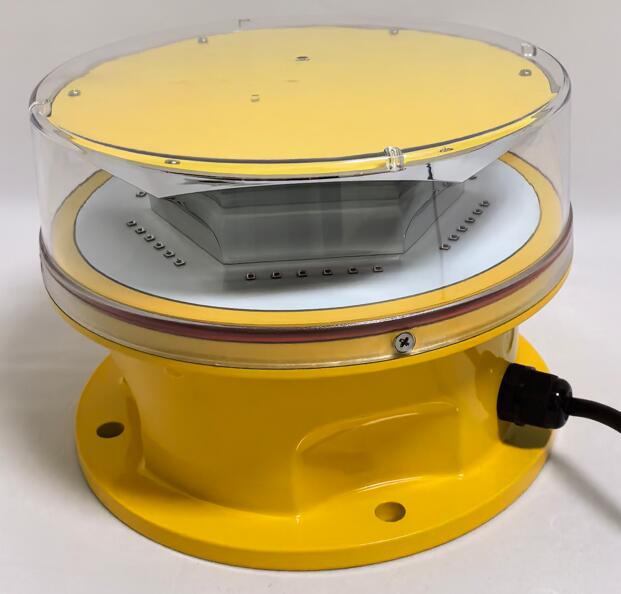Posted: 2025-02-02
Airplane warning lights play a critical role in aviation safety by ensuring that tall structures, communication towers, and buildings remain visible to pilots. These lights help prevent collisions, especially in low-visibility conditions such as fog, heavy rain, and nighttime operations. With continuous advancements in lighting technology, modern airplane warning lights have become more efficient, durable, and compliant with global aviation standards.
Importance of Airplane Warning Lights
1. Collision Prevention
Airplane warning lights alert pilots to potential obstacles in their flight path, significantly reducing the risk of accidents. These lights are particularly essential for high-rise buildings, wind turbines, and transmission towers.
2. Regulatory Compliance
Organizations like the Federal Aviation Administration (FAA) and the International Civil Aviation Organization (ICAO) mandate the use of warning lights on structures exceeding a certain height. Compliance ensures airspace safety and prevents legal complications.

3. Enhanced Visibility in Low Light Conditions
Designed for operation in all weather conditions, airplane warning lights provide high-intensity illumination, ensuring visibility from long distances. They are crucial for nighttime aviation and foggy environments.
| Airplane Warning Lights |
| Airplane Warning Light |
Types of Airplane Warning Lights
1. Low-Intensity Lights
Used for structures below 45 meters (150 feet), these lights emit a steady red glow and are ideal for smaller buildings and antennas.
2. Medium-Intensity Lights
Commonly used for structures between 45 and 150 meters (150-500 feet), these lights can be red or white. White flashing lights are typically used during the day, while red steady or flashing lights operate at night.
3. High-Intensity Lights
Designed for structures exceeding 150 meters (500 feet), high-intensity lights flash white or red and provide maximum visibility. These are used on skyscrapers, broadcast towers, and large industrial facilities.
Key Features of Modern Airplane Warning Lights
1. LED Technology for Efficiency
Modern airplane warning lights primarily use LEDs due to their low power consumption, longer lifespan, and improved brightness compared to traditional incandescent bulbs.
2. Solar-Powered Solutions
Solar-powered airplane warning lights are increasingly popular for remote locations. These systems integrate solar panels and battery storage, ensuring continuous operation even in power outages.
3. Automated Light Control Systems
Advanced models come with light sensors and automatic switching between day and night modes, optimizing power usage and enhancing visibility based on environmental conditions.
4. Durability and Weather Resistance
Since these lights are exposed to extreme weather conditions, they are built with high-quality, corrosion-resistant materials and designed to withstand wind, rain, and snow.
Installation and Maintenance Considerations
1. Proper Placement for Maximum Visibility
Warning lights must be installed at specific heights and positions to ensure they are clearly visible to approaching aircraft. The correct configuration depends on the structure’s size and regulatory guidelines.
2. Regular Inspection and Maintenance
Routine maintenance, including checking for faulty bulbs, ensuring battery efficiency, and cleaning lenses, is necessary to maintain optimal performance.
3. Compliance with Aviation Standards
Before installation, verifying that the warning lights meet FAA or ICAO requirements is crucial to avoid penalties and ensure proper functionality.
Future Trends in Airplane Warning Lights
1. Smart Warning Light Systems
With the rise of IoT technology, airplane warning lights are being integrated with remote monitoring systems, allowing real-time performance tracking and automated alerts for maintenance needs.
2. Enhanced Energy Efficiency
Next-generation LED warning lights are focusing on even lower energy consumption while maintaining high brightness levels.
3. Integration with Aviation Navigation Systems
Future warning lights may communicate directly with aircraft navigation systems, providing real-time obstacle detection alerts for pilots.
Airplane warning lights are a vital component of aviation safety, ensuring that obstacles are clearly visible to pilots and reducing the risk of collisions. With technological advancements, these lights are becoming more efficient, durable, and intelligent. Choosing the right warning light system and ensuring compliance with aviation standards can enhance airspace safety while optimizing energy efficiency. As innovation continues, airplane warning lights will further evolve to meet the growing demands of modern aviation.